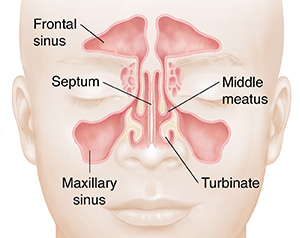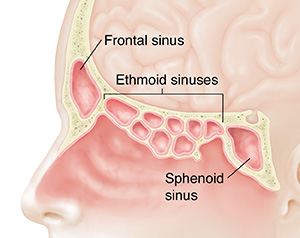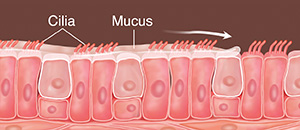Your sinuses are air-filled spaces between the bones in your head. They have small openings that connect to the nasal cavity. The sinuses make mucus that drains into the nose. This helps keep the nose moist and free of dust and germs.
Parts of the nasal cavity
-
The septum is the wall of cartilage and bone in the center of the nasal cavity.
-
The middle meatus is the intersection between the sinuses.
-
Turbinates are ridges on the sides of the nasal cavity.
Cilia keep sinuses clear
Air circulates freely though healthy sinuses. Tiny, hairlike structures called cilia line the sinuses. Cilia move the thin, watery mucus through the sinuses and into the nose. Sinuses are healthy when they drain freely. Sinus drainage can be blocked if the sinus lining is swollen or if mucus is too thick. Cilia that are damaged or don’t work correctly can also lead to problems with drainage.




